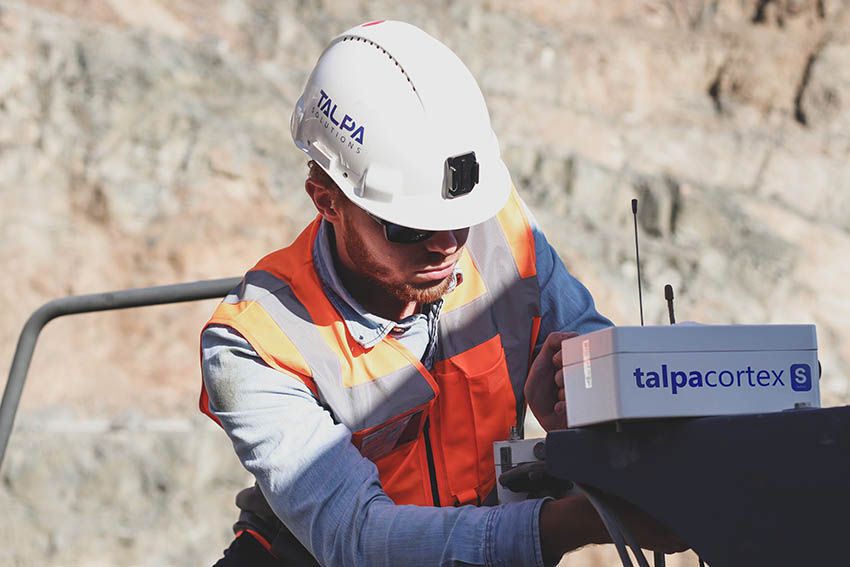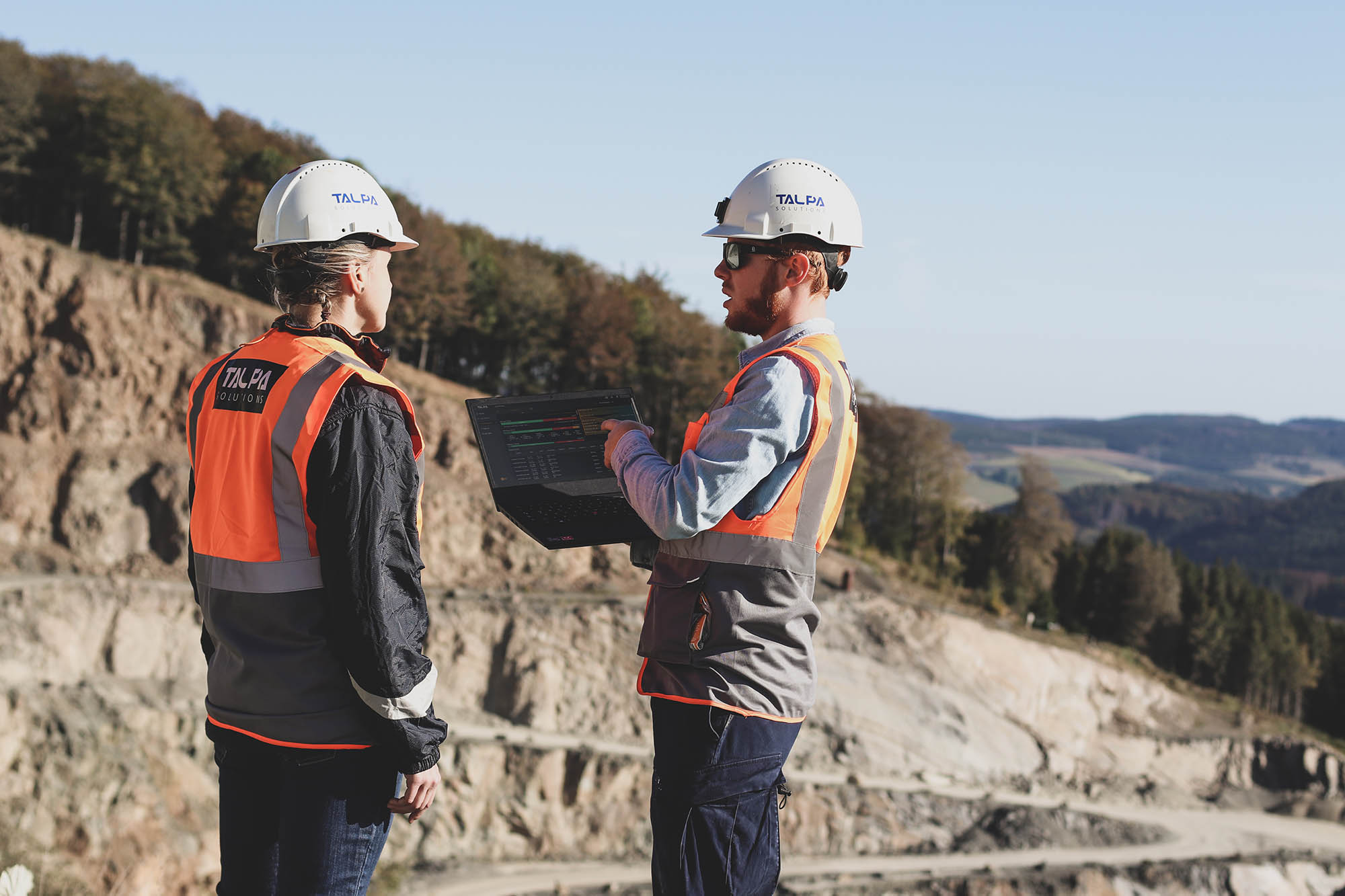talpasolutions is an industrial intelligence software company headquartered in Essen, Germany. They develop analytic solutions for fixed and mobile assets in heavy industries. Heavy industries accumulate a wealth of disparate data throughout all project phases, from planning to operations and maintenance (O&M). It can be collected from various sources, including sensors embedded or retrofitted on mobile equipment and fixed assets.
With talpasolutions’ “end-to-end” solution, companies that buy / utilize or sell / lease heavy machinery can use their data to identify many insights, allowing increased productivity, cost reduction and new revenue streams.
Interview with Artem Zitzer, Co-Founder / Solution Engineer & Partner Manager at talpasolutions.
Easy Engineering: How does your company build and maintain trust?
Artem Zitzer: We value timely and efficient communication with our clients. This allows us to understand their problems, align on a common long-term vision, and iterate feedback loops towards it. From the beginning, we work with our clients to develop value statements that align with their business goals, and then evaluate progress against these agreed-upon value statements. As a customer-centric company, we do our best to satisfy our clients’ needs and provide high-quality service. By providing excellent service, we can more openly and honestly communicate with clients and talk through weaknesses — be it technical, interpersonal or procedural.
E.E: Tell us about some of the most successful project/projects from around the world.
A.Z: In the last year, we have ramped up the integration of machines nationally in Germany and internationally for some of the world’s most well-known mining and heavy industry companies. Mining and industrial sites have highly mature proprietary/legacy processes and machinery, which can create a challenge when it comes to interoperability. To combat these challenges, we have developed a machine agnostic operating system and data logging technology, which allows the recording and transfer of high-definition raw data in the most cost-effective way. We also use multiple communication capabilities to enable data to be delivered to our cloud platform in near-real time and without loss.

E.E: What ranges of products/solutions were used in the project/projects?
A.Z: Our talpacortex uses proprietary data logging technology to record and transfer high-definition raw data onsite. This allows the integration of machines into talpa.io, our high-performance cloud platform for data ingestion and processing. Data is instantaneously screened, secured and sorted on the platform. Our user-friendly customizable web interface and dashboards allow visualization of insights from data analysis for various user groups.
E.E: How were these products/solutions used to optimize the client’s business?
A.Z: Our hardware, the talpacortex, is used to gather the entire data of each machine accessible to the user and validate it based on the ground truth (raw data of the machine). We then aggregate the raw data into metrics and KPIs to understand machine performance and health from day one of machine integration. Our goal with these clients is to improve shift handover, reduce MTTR (mean time to repair) and provide the right data to the right people when they needed it. We configure dashboards on our platform to display shift insights of fleet performance, maintenance overviews by prioritized machine failure messages, and persona-based notifications on machine health status changes and performance deviations. All features pay into reducing downtimes, enhancing availability and utilizing a machine at its peak capability to get the most value for the investment into the machine.
E.E: What innovative features do the products / solutions have?
A.Z: Our platform allows performance and health status change insights in-shift instead of at shift-end (or lost entirely), as well as customized Persona based insights. One of the often-named problems with gathering more data is that it’s not creating any value, but just increasing the amount of stuff to look through to find value adding insight. This can lead to a needle in a haystack effect. The haystack is data, and the needle is the insight. We have a team of data scientists and programmers who are specialized in utilizing the data to generate actual context, discover patterns in exceptions, and thereby disclosing gold nuggets of insights. Whether it be root causes of losses in production due to bad road conditions, a machine’s oversensitivity to trigger failure messages and distract the driver or uncovered training need of a new driver. Our Industrial AI platform with a data science-first approach makes this vast trove of previously unused data accessible and understandable.

E.E: What were the challenges that you encountered?
A.Z: Often clients believe they fully understand their problems and have a notion of a solution they require, which is why they have chosen to use our services. We must do our due diligence and dig deeper to get at the root causes of an issue. What they believe is the main problem may be a symptom. A symptom is a sign or indication of a root cause, but it is not, by itself, a cause. It is our job to recognize symptoms and uncover together with the client the underlying problem, which will help us implement solutions that produce quantifiable results. We also must focus on our users’ workflows and lay out the business value when introducing functionality that alters their current way of working and communication. It requires open and honest feedback to satisfy different stakeholders, generate acceptance for the proposed workflow alterations and built trust into the accuracy of the insights, while not stretching too thin in different directions. There is nothing worse (in product development) than pushing five feature development fronts to 20 percent without having reached at least one feature with 80 percent in a given timeframe. So prioritization and sequencing of feature development is paramount.
E.E: How did you overcome the challenges?
A.Z: To overcome challenges and develop solutions, you want to get to the essence of the problem and then fix it. To do this, you must ask why? Why? WHY? By doing this, we let the client/user concretize and use specific use cases. We believe in feature-driven development (FDD), which is a customer-centric software development methodology known for short iterations and frequent releases. We put the value of a feature at the foremost position for every decision to use resources for development. It includes the constant challenging of ideas and saying “No” to many propositions or “No, not now/in this iteration” to be more precise. By doing this, we can schedule and release features in a prioritized and sequenced manner, while satisfying clients with an aligned incremental roadmap.
E.E: What are your estimations for the rest of the year?
A.Z: We will validate new machine types that continuously enter our system and require an initial activity detection set-up. Our ecosystem with contributing partners is increasing with component manufacturers and OEMs that extend the value of our Industrial AI platform to further assets and contexts. We will continue to manage expectations accordingly and juggle priorities based on urgency, business impact, and context. All that will be backed up by a team increase of 30%.

